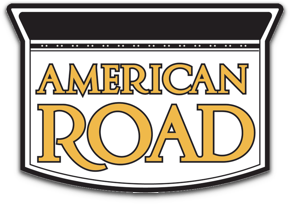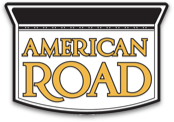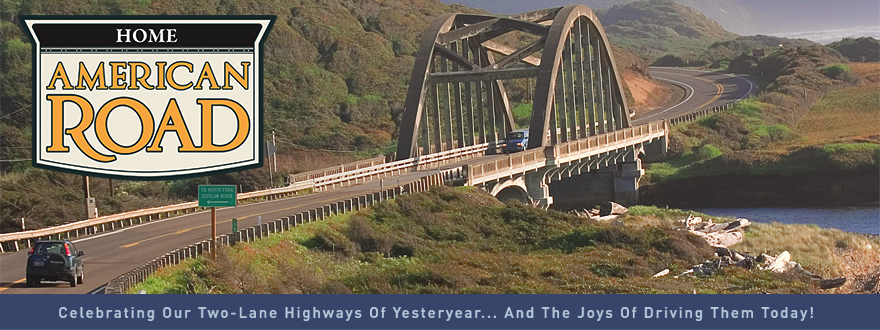-
Posts
196 -
Joined
-
Last visited
Content Type
Profiles
Forums
Gallery
Blogs
Calendar
Everything posted by Steve_Colby
-

Now Dave's (keep The Show On The Road) Done It!
Steve_Colby replied to Steve_Colby's topic in National Road / U.S. 40
Jim, I looking for both new and old. In a prefect world, I'd love to have a new shot taken from the same place as the original to show the changes. Steve -

Now Dave's (keep The Show On The Road) Done It!
Steve_Colby replied to Steve_Colby's topic in National Road / U.S. 40
Dave, Thanks for asking about the Bruce Book. I have read and quoted sections of it and intend to read it in it's entirety in the near future. This book and a number of others are available to download free online. Check out the CRP Reference section for a list of books with links. Steve -
Dave's 1925 Mohawk-Hobbs National Old Trail/National Road Guide is now online at CRP in a PDF format. (That's old stuff...) !CHALLENGE! I'm double-dog darin' the members of the American Road Forum to help me document the M-H National Road Guide in Photos & Postcards. That's right... From Vandalia, IL to Baltimore, MD as noted in the Guide. Are you up to the challenge? I've made a piddly start at 1925 Mohawk-Hobbs National Old Trail/National Road Grade & Surface Guide - A Photographic Rendition and will be adding more as time goes on. Steve
-
Dave, Thanks again for the M-H images, I hope to have them online tomorrow. I'd love to have the 1928 ACSC Nat'l OTR Guide too. Thanks also for your kind words. BTW, I received word today the City of Cumberland is working on a celebration/re-dedication, in 2011, to mark the 200th Anniversary of the start of construction. I'll keep you posted. Steve
-
When you're cruising down Route 40 in MD and PA, have you ever given thought to the age of the road you're on? While some realignments date to the 1930s, 40s and 50s, other sections of the National Road date to the 1700s. For instance, the section of Scenic Route 40 west of Indian Springs, MD running in bits and pieces through Hancock, MD and then west on Rt. 144 to Woodmont Road. This section of road was originally built in 1758 as part of a military road from Fort Frederick (Big Pool, MD) to Ft. Cumberland. While the road was being built, the BRITISH soldiers were attacked by Indians. If you're interested in reading more, go to: The Fort Frederick to Fort Cumberland Road Steve
-

New Us 40 Monument - Indianapolis
Steve_Colby replied to Chris Rowland's topic in National Road / U.S. 40
This is all I can find... West Washington Street Overpasses As the historic National Road, or US Route 40, Washington Street has played a critical role in the development of Indianapolis. From visitors traveling through the city to residents using the street on a daily basis, West Washington Street is an important corridor in Indianapolis. Along the corridor, three railroad overpasses present tremendous opportunity for gateway treatment. These overpasses are located near South Harding Street, Tibbs Avenue and Hoffman Road. Each overpass has its own character but all have similar construction and present an opportunity to serve as gateways up and down the street. -

Where The Cumberland/national Road Started
Steve_Colby replied to Steve_Colby's topic in National Road / U.S. 40
Dave, Thank you very much! I appreciate your time, efforts and assistance. Steve -
Nice piece, Jim! What screw is loose in some of us that makes seeking out abandoned roadways and bridges such a pleasurable experience? I know my wife doesn't understand but she enjoys the ride... Steve
-

Where The Cumberland/national Road Started
Steve_Colby replied to Steve_Colby's topic in National Road / U.S. 40
Dave, That would be great! Maryland is what I'm primarily looking for right now but Western PA, WV, OH, IN and IL would be groovy if you have the time. (The route of the Nat'l Road from Baltimore, MD to Vandalia, IL) Thanks. Steve -

Where The Cumberland/national Road Started
Steve_Colby replied to Steve_Colby's topic in National Road / U.S. 40
Dave (Keep the Show On the Road), I ran across your historical road map website while searching for the 1926 Mohawk-Hobbs map of Maryland. I going to add it to CRP's Online Reference section. Do you have a copy of the M-H Guide above and would it be possible to add it to the collection? Thanks! Steve -

Help Document The Original Cumberland/national Road
Steve_Colby replied to Steve_Colby's topic in National Road / U.S. 40
Denny, I haven't researched this any further than to look up the law but... CHAPTER 125. An act incorporating a Company to make a Turnpike Roadfrom Williamsport to Hagerstown. Passed Mar.2, 1833 Section 1. Be it enacted by the General Assembly of Maryland, That a company be and the same is hereby incorporated, for making a turnpike road, to be commenced at the eastern limits of the town of Williamsport, in Washington county, and continued thence by the nearest and best route, to the town of Hagerstown in said county. **** If the road was newly completed, it would most likely been in better shape then the National Road. Conococheague Bridge - over Conococheague Creek: This four-arch span was built in 1829 at Williamsport by Charles Wilson & Co., agents of the Lloyds of Pennsylvania. It has survived two major remodeling projects-entailing addition of cantilevered concrete aprons to widen its roadbed-but still rests as soundly on its original arches as when it was first built. (Source) Photo Steve -

Help Document The Original Cumberland/national Road
Steve_Colby replied to Steve_Colby's topic in National Road / U.S. 40
Thanks, Dave. That answers my question. For an additional commentary on the Hagerstown-West route, see Robert Bruce's The National road; most historic thoroughfare in the United States (1916) beginning on page 26. Bruce also provides maps showing the towns between Hancock and Flintstone. Steve -

Help Document The Original Cumberland/national Road
Steve_Colby replied to Steve_Colby's topic in National Road / U.S. 40
Denny, I have been studying the question of the Road from Hagerstown to Clear Spring for the last day or so and have come up with an answer. The first problem centered around the fact there are (2) Conococheague Bridges - One in Williamsport and one near Wilson's Store on old Route 40. Early turnpike legislation (1804) specified the road was to run from Boonsborough (Boonsboro) to Williamsport. (Williamsport was on the Wagon Road from Philadelphia to North Carolina.) Later MD legislation specifies the Frederick Road with run from Boonsboro, to Hagerstown, and then to the west side of the Conococheague Bridge. MD Gov. Goldsborough's report of 1818 provides the answer to the confusion. (I hope to have the complete article on MD Turnpikes online shortly.): To sum it up, Goldsborough noted the various options available to connect the road from Boonsboro to the west side of the Conococheague (east of Clear Spring) and left it up to the Assembly choose. ----- The Boonsborugh to Hagerstown Turnpike Act of 1821 provides the answer to the route the Legislature chose: This route follows the Boonsboro, through Funkstown and Hagerstown, to Clear Spring road of today. (Hagerstown was also on the Great Wagon Trail so Williamsport was left "to twist in the wind".) *** This 1856 Map of Maryland should answer your question about Prattsville: Steve -

Help Document The Original Cumberland/national Road
Steve_Colby replied to Steve_Colby's topic in National Road / U.S. 40
Dave, Does the Blue book have the route from Funkstown, MD through Hagerstown and then west to Williamsport or Clear Spring? Steve -

Help Document The Original Cumberland/national Road
Steve_Colby replied to Steve_Colby's topic in National Road / U.S. 40
Jim, I enjoyed reading your blog last night. Some great photos and information. I'll add it to the CRP online reference section shortly. Steve -
Warren, I share your passion for the National Road and created a website to document the history of the road and the communities that grew up alongside. (Cumberland Road Project) Be it destiny or fate , in the last 30 years I have lived on Alt. Route 40 in Frederick, MD, N. Potomac St. Hagerstown (About 4 blocks from Rt. 40) and in Cumberland, MD (About 2 blocks off of the original Cumberland Road and on Gen. Braddock's Road). I invite you to join the collaborative efforts to document the Old Road and it's communities. (The Frostburg Photo Gallery) Steve Colby
-
Hello! My name is Steve Colby and I live in Cumberland, MD. Cumberland is the town steeped in transportation history. It's where the Cumberland/National Road began (Back in 1811), following trails blazed and cut by Nemacolin and Christopher Gist, George Washington and Gen. Braddock (1755). It's the western terminus of the C & O Canal and, for ten years, was the western terminus of the B & O Railroad (1840s-50s). I live about two blocks from the original alignment of the Cumberland/National Road (Greene St. to Gwynn's Tavern) and the city street I live on was Nemacolin and Gist's trail and Gen. Braddock's road. (A block and a half away is the route of the colonial road that closely followed Braddock's road.) I was born in Cumberland but grew up in Prince Georges County, near Washington. DC. My family traveled to Cumberland often, during the 1950s and 1960s, via Route 40 and the B & O to see relatives. My wife and I moved back to Cumberland about 5 years ago after falling in love with the grand old city. Without previous knowledge of it's history, we contracted to buy a downtown commercial building. After some research, I found it had been owned by my great grandfather in the late 1800s. I have a passion for history. Spurred on by our historic surroundings and the upcoming 200th anniversary of the start of the National Road, I started a website, The Cumberland Road Project, to document the Cumberland/National Road and the communities that grew up alongside. I invite you all to join in and contribute photos and historical commentary on America's first federally funded interstate highway. Steve
-
From a stone at the corner of Lot. #1 on Greene St. (Cumberland, MD)... In May, 1811. A stone, reset in 1903, marking the spot the Road started. The traffic island where the stone is located. (George Washington's cabin/Riverside Park in background.) Steve
-

Help Document The Original Cumberland/national Road
Steve_Colby replied to Steve_Colby's topic in National Road / U.S. 40
Jim, I've corresponded with Christopher a few times in the recent past. He has done a great job documenting mileage markers, road realignments and historic structures. He previously worked at the Enoch Pratt library in Baltimore and had access to State Hwy Admin. photos and documents stored there. In addition, he had family in Western MD he would visit regularly. He has since moved to Ohio and on to new interests. He has given me permission to use his photo collection as needed. Steve -

Help Document The Original Cumberland/national Road
Steve_Colby replied to Steve_Colby's topic in National Road / U.S. 40
Thanks for the warm welcome and offers for information! I'll take you up on them. Mondays and Tuesdays are my days off so I try to shoot pictures at least one of them. It was kind of a crappy day today but we found some interesting sites on Negro Mtn. west of Grantsville, MD. I believe this is an original section of the Cumberland/National Road. You can still see the stone base. (Map It) The remains of an old auto camp a short distance up the road from the realigned road section above. (This is one of a few cabins.) Roadside park near the summit of Negro Mtn. The tables are new but the stone fireplaces may date from the 1930s-40s. ~ Steve -
Hello! My name is Steve Colby and I am the editor of the Cumberland Road Project. The CRP is a collaborative effort to document the history of the towns, cities, businesses and families that grew up along the Cumberland Road / National Highway from 1811 to the 1950s. It is hoped the CRP will become a valuable resource for those traveling and/or studying the Road as well as help to document preserve historic Road sites. We're looking for both vintage and new photographs and written material. Those wishing to join our efforts can contact me at: Editor The website URL is: Cumberland Road Project and the newsletter/blog is: CRP Blog Here are some photos from the website: Little Shade Run Bridge - West of Grantsville, MD, Nov. 2009 - This is a photo of the south side of the bridge built circa 1813. Approximately 75% of the bridge has collapsed on the north side. ---------------------------- The next three photos are of a section of the old Road that parallels I-68 (On right in photo) just east of Cumberland, MD. This section is on private property. The restaurant in the postcard is the Green Grill, probably circa 1930-40s. The concrete foundation in the final photo is, what I believe, that of the Green Grill. Old Route 40 looking east The Green Grill ----- Additional photos can be found at: CRP Photo Gallery ~ Steve Colby



